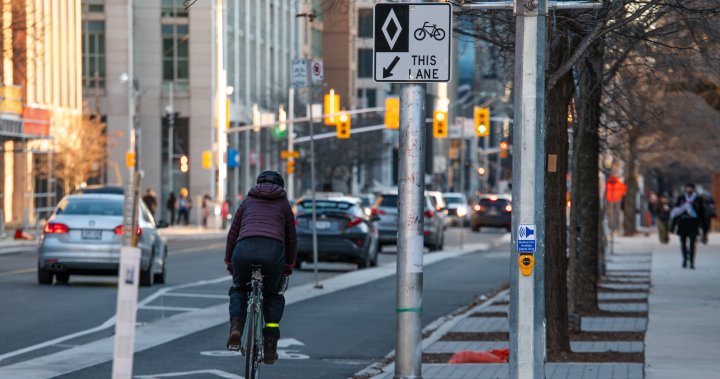The contentious battle over Toronto’s Bloor Street bike lanes intensified Thursday as the provincial government appeared in court to challenge a recent judicial order mandating their removal. The controversial infrastructure project, which has become a flashpoint in Ontario’s urban transportation debate, now faces a critical legal test that could determine the future of cycling infrastructure across the province.
Ontario’s legal team argued before the appellate court that the lower court judge overstepped jurisdictional boundaries when ordering the immediate dismantling of the protected bike lanes. “This case represents a fundamental question about municipal authority and provincial oversight,” said Ontario’s lead counsel during proceedings. “The previous ruling failed to properly consider the complex interplay between local infrastructure decisions and provincial transportation frameworks.”
The original ruling, which sent shockwaves through cycling advocacy communities last month, found that the bike lanes violated provincial regulations by improperly restricting vehicle traffic on designated arterial roadways. Justice Eleanor Thompson had ordered the immediate removal of the lanes, describing them as “an unauthorized reconfiguration of a provincial transportation corridor.”
Cycling advocates gathered outside the courthouse in a show of solidarity. “These protected lanes have demonstrably improved safety for all road users,” said Eleanor Martinez of Cycle Toronto. “Data collected since their installation shows a 40% reduction in collision rates along the corridor, while maintaining reasonable traffic flow for vehicles.”
The case has drawn attention from urban planners and municipal leaders across Canada, many of whom have implemented similar infrastructure. “What happens in Toronto won’t stay in Toronto,” noted urban planning expert Dr. Rajiv Patel. “A precedent on provincial authority to override municipal infrastructure decisions could impact politics and planning nationwide.”
Transportation statistics have become central to both arguments. The provincial legal team highlighted traffic congestion metrics showing a 23% increase in commute times along affected routes. Meanwhile, the city’s representatives presented studies indicating a 15% increase in local business activity along corridors with protected cycling infrastructure.
“This isn’t merely about bike lanes,” explained Mayor Jennifer McKenzie in a statement released Thursday. “This case fundamentally addresses the authority of municipalities to implement evidence-based infrastructure decisions that serve their communities’ unique needs and priorities.”
The court has promised an expedited decision, recognizing the significant public interest and practical implications. Construction crews, initially mobilized to begin removal work, remain on standby pending the appeal outcome.
The dispute represents more than a simple infrastructure disagreement—it highlights the evolving tension between traditional car-centric urban design and modern mobility approaches that prioritize multiple transportation modes. Similar legal challenges have emerged in other Canadian cities, suggesting this case could establish important precedent.
As Toronto awaits the court’s decision, expected within two weeks, residents continue navigating the uncertain future of urban mobility. The fundamental question remains: in the complex web of municipal and provincial authority, who ultimately decides how we shape our streets and move through our cities?










